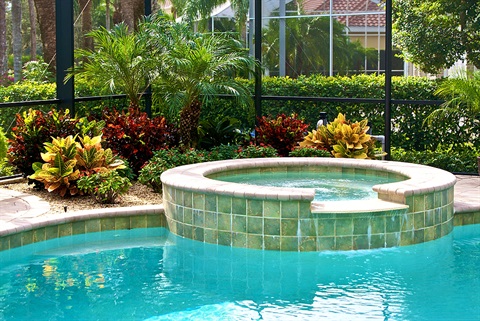Residential swimming pools

To avoid pool-related drownings in private swimming pools and spa pools, appropriate safety barriers must be installed and maintained to restrict entry by young children.
A swimming pool or spa pool owner is responsible for making sure that all required pool safety features are maintained at all times.
Safety barrier requirements
All swimming or spa pools must have a continuous safety barrier that restricts access by young children to the pool. The design and construction must be in accordance with the Australian Standard (AS 1926 - Swimming pool safety: Part 1, Part 2 and Part 3).
Fencing must be constructed in such a way to make sure that:
- the fence is an effective barrier to young children
- it is permanent
- young children can't crawl under or climb over it by using foot and hand holds
- it is at least 1.2 metres high
- any boundary fences used as part of the child-safety barrier are at least 1.8 metres high on the side that faces the pool, with a 900 millimetres non-climbable zone at the top inside of the fence, a boundary barrier may be climbable on the neighbour's side.
Gates to the pool area must:
- swing outward from the pool area
- be self-closing from any position
- be fitted with a latching device, out of reach of small children, at least 1.5 metres above ground level.
Please refer to the Australian Standard (AS 1926 - Swimming pool safety: Part 1, Part 2 and Part 3) for the complete list of mandatory requirements.
Is Development Approval required for a swimming pool?
Any new swimming pool or spa pool capable of being filled to a height of 300mm of water or more requires development approval from Council.
Some inflatable or portable swimming pools may require approval from Council and will require a swimming pool safety fence. Please contact us for information before you purchase or install one of these pools.
Will Council need to inspect my pool, spa or safety barrier posts approval?
Council is required to inspect all new swimming pools within 10 business days of the receiving notification of the permanent swimming pool safety features installation.
Notifications must be provided to Council upon completion of the permanent swimming pool or spa pool safety features. Notifications can be provided here.
If your swimming pool does not comply with the Australian Standard, it will be followed up in accordance with Council's Enforcement Policy.
Legal obligations when selling a house with a swimming pool or spa pool
Pools built before 1 July 1993
If you are selling your property with a swimming pool or spa pool, you are responsible for making sure that current safety requirements for swimming pool safety are met. This may mean you have to upgrade fencing or barriers.
If the property where a swimming pool or spa pool is located is not for sale, the pool can continue to comply with the old Swimming Pools Safety Act 1972. The Act requires a swimming pool or spa pool owner to ensure that the pool is enclosed by a fence, wall or building to restrict access by young children.
Properties sold after 1 October 2008 must have child-safety barriers that comply with Ministerial Building Standard MBS 004 - Swimming pool safety – designated safety features for pools built before 1 July 1993 before settlement. This means that barriers must be installed to separate the pool area from the house where ever possible.
Pools built on or after 1 July 1993
Swimming pools or spa pools built on or after 1 July 1993 must comply with the rules that were current when the application for construction was lodged. This includes the provisions of the Planning, Development and Infrastructure Act 2016 (or the former Development Act 1993) and the Building Code of Australia to restrict access to the pool from the house, garage, street and any adjoining properties.